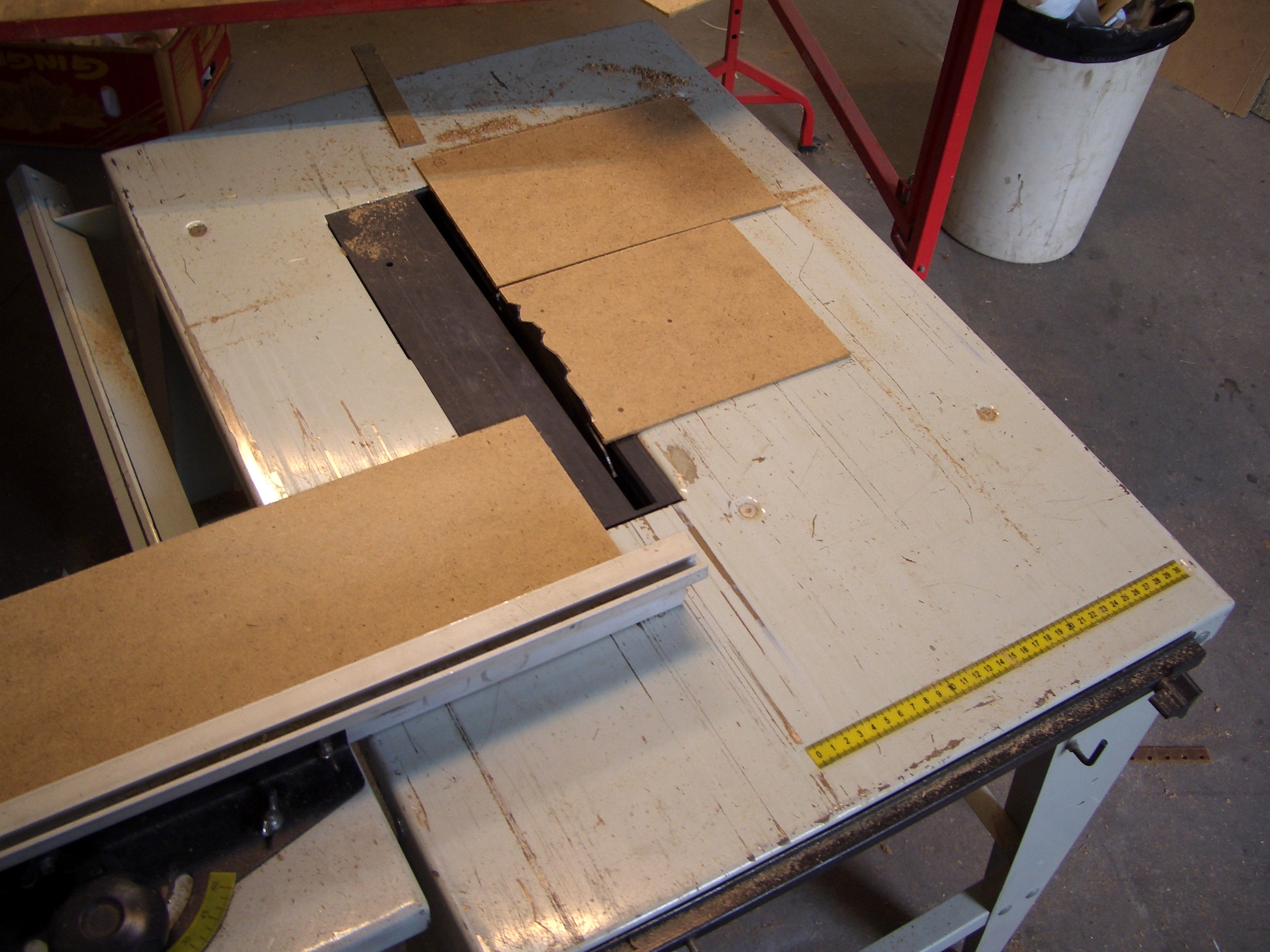Chaotic Shelves, Quick and Dirty
by Jiskar in Workshop > Shelves
14084 Views, 61 Favorites, 0 Comments
Chaotic Shelves, Quick and Dirty



A very quick way to make a chaotic looking array of shelves.
This one is made of surplus pieces of hardboard + tie-wraps, but the concept can be used with many (scrap) materials.
This one is made of surplus pieces of hardboard + tie-wraps, but the concept can be used with many (scrap) materials.
Get Your Materials


The strength of this structure comes from the shape that the sheets make to each other. One shelf is the support for the other so to say. Every second corner is attached to the wall. The corners aren't fixed by themselves (they're just tie-wrapped), but are held firmly in place by the structure.
This way you can make a form-fixed structure without the need for sturdy joints.
What you need are three basic things:
Sheet material. Use whatever you like as long as it's strong enough for your needs. I used 3mm hardboard because i had a lot of it left. It bends when you put weight on it but it doesn't break easily.
Corner connections. Tie-wraps is definitely an easy option, but wire or rope will also do the trick.
Wall connections. Screws with a washer or something like that so you can connect a tie-wrap to it. I found some old meccano corners that were really handy for this.
This way you can make a form-fixed structure without the need for sturdy joints.
What you need are three basic things:
Sheet material. Use whatever you like as long as it's strong enough for your needs. I used 3mm hardboard because i had a lot of it left. It bends when you put weight on it but it doesn't break easily.
Corner connections. Tie-wraps is definitely an easy option, but wire or rope will also do the trick.
Wall connections. Screws with a washer or something like that so you can connect a tie-wrap to it. I found some old meccano corners that were really handy for this.
Measure


Determine the shape that you want to make.
If you use bendable material like I did, don't make the shelves to long. Make your corners so that they give good support. A 90 degree corner is best, but you can make it a little more or less to make a nice shape.
The best method is to make a sketch, and then mark out the corner points on the wall. Once you have these you can measure the distance in between them. Write the measurements in your drawing.
By the way, you don't need to be super-precise. If you make a little error the shelves will still fit because not all the corners are connected to the wall.
If you use bendable material like I did, don't make the shelves to long. Make your corners so that they give good support. A 90 degree corner is best, but you can make it a little more or less to make a nice shape.
The best method is to make a sketch, and then mark out the corner points on the wall. Once you have these you can measure the distance in between them. Write the measurements in your drawing.
By the way, you don't need to be super-precise. If you make a little error the shelves will still fit because not all the corners are connected to the wall.
Prepare the Shelves



Now saw everything to your measurements. Put numbers on all the pieces to prevent messing them up.
Then drill three holes in the sides for the tie-wraps. It's handy to make a little drill-template if you need to drill a lot of pieces.
Then drill three holes in the sides for the tie-wraps. It's handy to make a little drill-template if you need to drill a lot of pieces.
Screw



Now make the wall connections. Use the markings you set on the wall earlier and put a screw on every second one.
Choose it so that the upper corners of vertical shelves have screws. These are the corners that will be pulled on so they need some wall support. The lower corners will only press against the wall.
Choose it so that the upper corners of vertical shelves have screws. These are the corners that will be pulled on so they need some wall support. The lower corners will only press against the wall.
Bind Everything Together






Now connect a few pieces together with the tie-wraps and tie them to the wall connections. Then build further until every shelf is connected. Snap off the excess tie-wraps and tadaa.
Readyteddy!
Readyteddy!